The Titian Room, named after the Venetian master painter, is home to the masterpiece The Rape of Europa. In stark contrast to the dramatic mythological scene depicted on the large canvas, Isabella Stewart Gardner placed in front of it a small religious panel painting by an artist in the circle of Giovanni Bellini. It sits on a table next to a vase of flowers, and beside a window looking over Boston’s Fenway (the first parkway of the city’s Emerald Necklace).
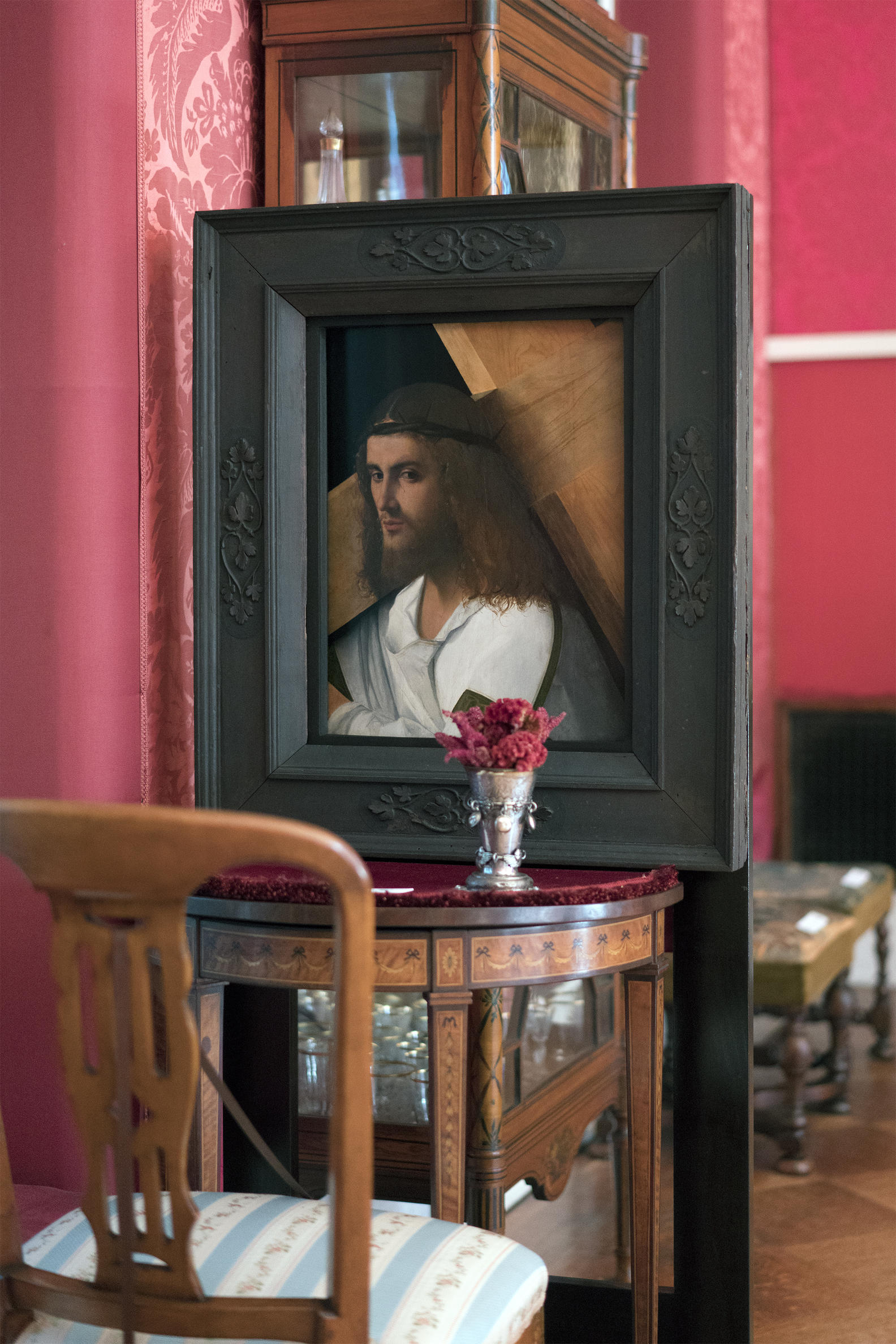
Titian Room, showing Circle of Giovanni Bellini, Christ Carrying the Cross, 2019
Painted between 1505 and 1510, the delicately executed image depicts Christ in a white robe carrying the cross. Tears rolling down his cheeks amplify the immediacy and emotional power of the image. The unknown artist created this small devotional painting not for a congregation but rather for one person’s private prayers.
Early Renaissance paintings are often painted on wood panels. Poplar, a soft and abundant hardwood, was the most common type of wood used in Renaissance Italy. Carpenters worked with painters to provide a support of the appropriate dimensions whose surface could be planed smooth. This allowed the artist to achieve finer, more precise detail than, for example, on canvas. Panel paintings are also stronger and more rigid than canvas paintings, but nonetheless, the organic characteristics of wood make it highly susceptible to changes in the environment. Over time, the wood can warp in response to fluctuating relative humidity and temperature. In extreme cases, warping can cause the panel to curve, like the side of a barrel.

The top edge of the Circle of Giovanni Bellini, Christ Carrying the Cross, 2012
Up until the early 20th century, collectors and restorers sought to fix curving paintings by thinning them down, flattening them, and applying a rigid support to the reverse. Conservators adhered this device—called a cradle—to the painting with strong glue. While the cradle sometimes prevented further warping, it often damaged the painted surface, resulting in splitting of the wood support and sometimes even paint loss.
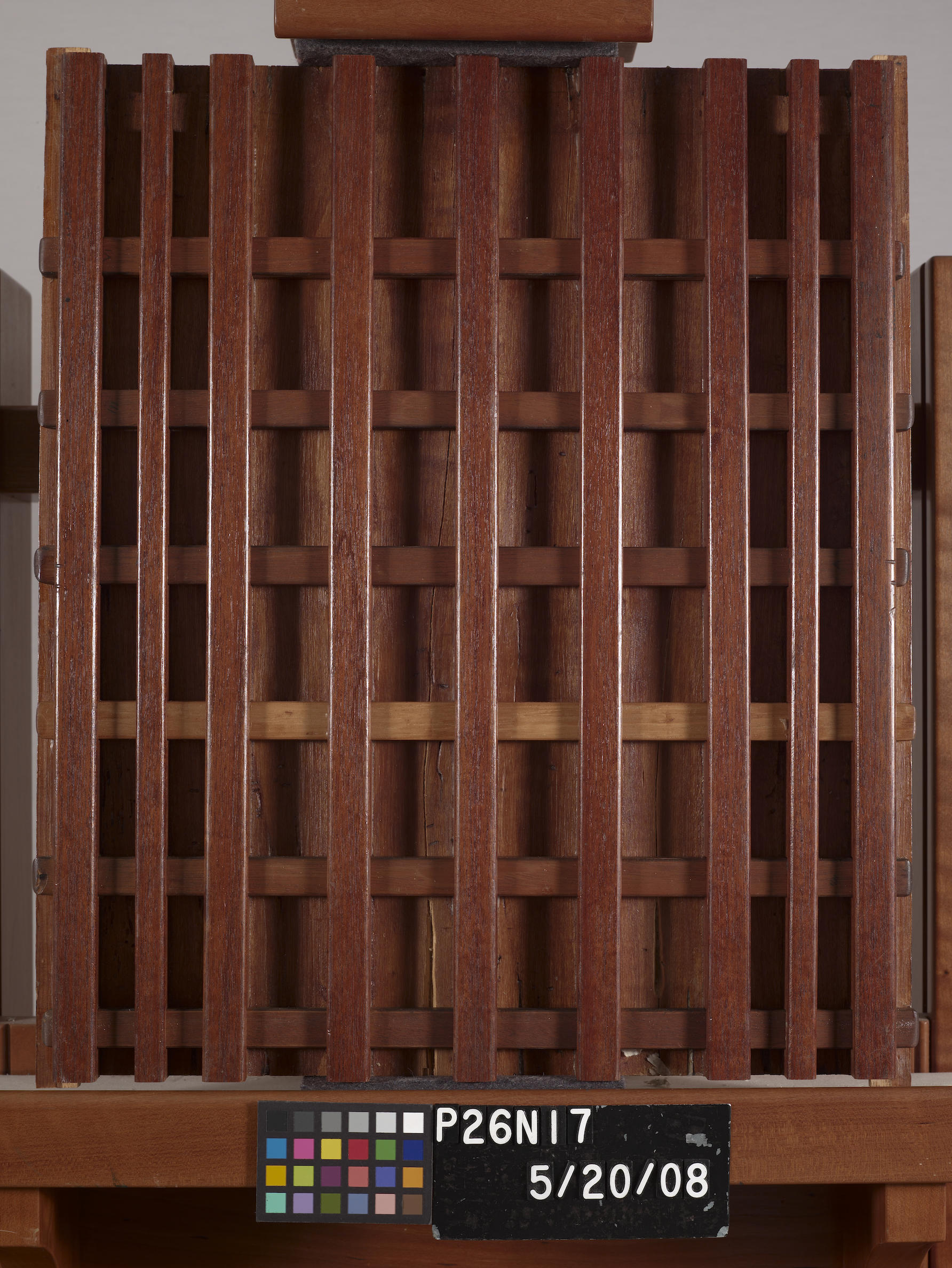
The back of the Circle of Giovanni Bellini’s Christ Carrying the Cross showing its cradle on the back of the panel, 2008
When Isabella purchased this painting in 1898, the painting was already suffering from the consequences of a heavy mahogany cradle attached to the reverse. Over time, temperature and humidity fluctuations caused multiple vertical splits to form along the wood grain. The result was not only bad for the painting but also for visitors. It created deformations apparent in a “washboard effect” of light falling over the distorted surface. Even worse, paint began to flake above splits in the wood.

Circle of Giovanni Bellini, Christ Carrying the Cross showing the cracks in the panel, 2019. See it in the Titian Room!
In 2019, Gardner Museum conservators decided it was time to fix the problem. Collaborating with Al Brewer, a specialist in the structural treatment of panel paintings, we removed the cradle, freeing the original wooden panel from its immobilized state and repaired the remaining splits. This treatment, both complicated and delicate, took place over the course of several months. Before work began on the wooden support, we removed old, degraded varnish and old restorations from the paint surface. Then we placed the panel face down on padding and began removing the cradle. Using Japanese saws and wood chisels, we cut away sections of the cradle’s stiff cross bars and finished removing them with chisels.
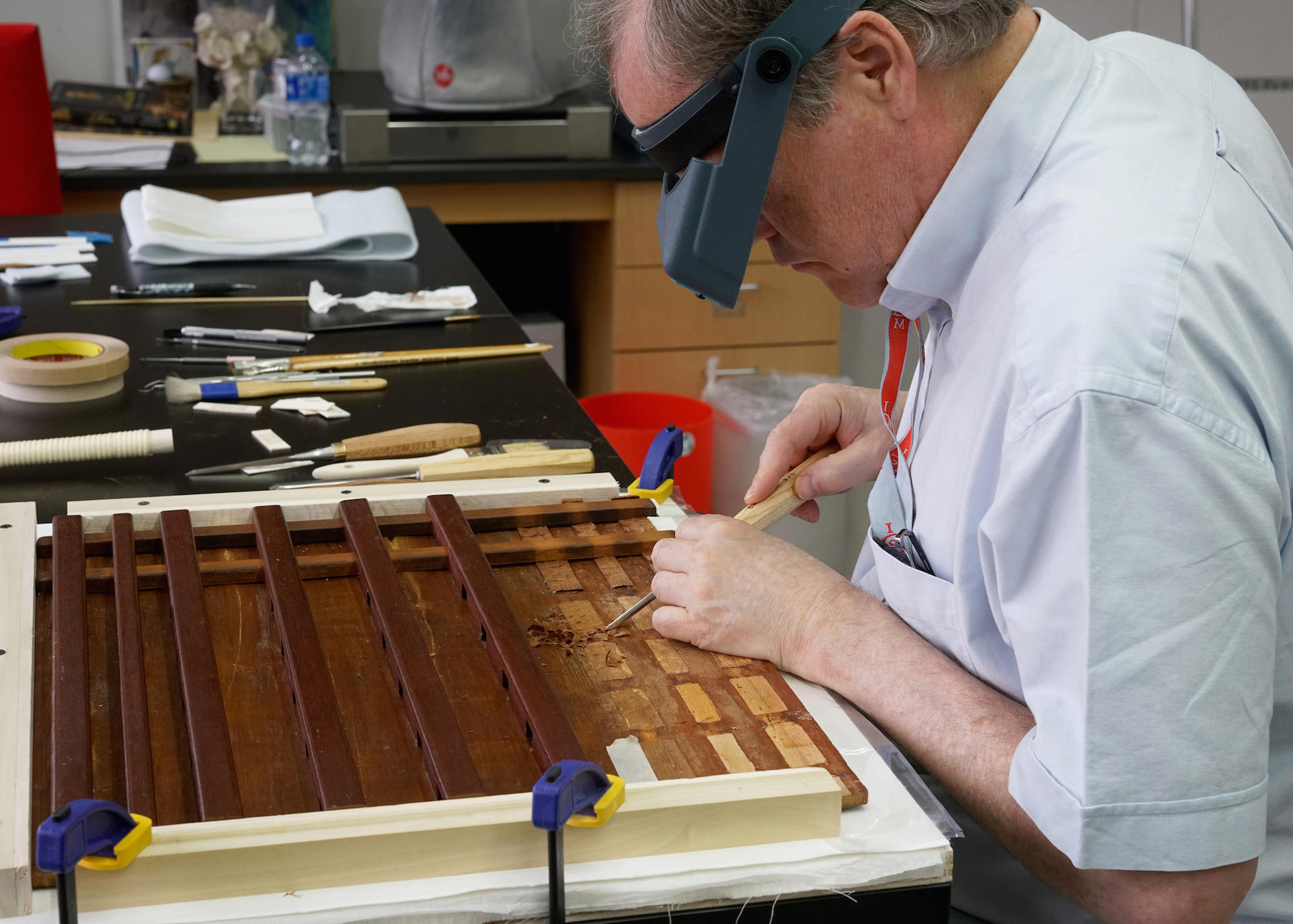
Al Brewer removing the cradle from the Circle of Giovanni Bellini’s Christ Carrying the Cross, 2019
Once freed from the cradle, the panel relaxed over several months, regaining a natural curvature. Finally, one by one, we realigned splits in the panel and glued them together.

Back of the Circle of Giovanni Bellini’s Christ Carrying the Cross with the cradle removed, 2019
After completing this complex procedure on the wooden panel, we turned the painting over and retouched areas of paint loss. First, we laid down an isolating layer of stable, non-yellowing varnish and filled paint losses. We meticulously restored the missing areas and applied a varnish over the paint surface, now finally returned to its former glory.
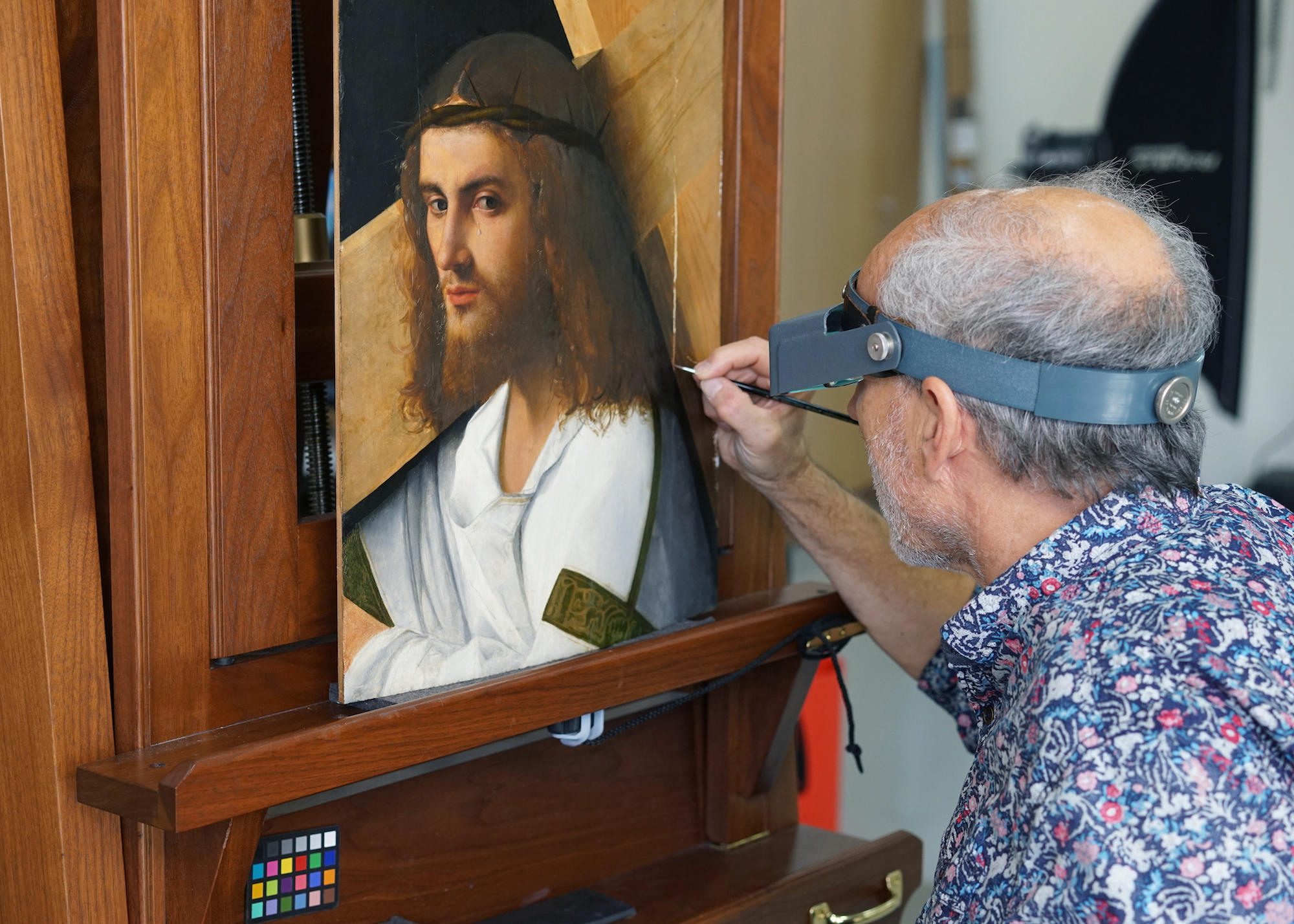
Gianfranco Pocobene retouching areas of lost paint on the Circle of Giovanni Bellini’s Christ Carrying the Cross, 2019
But one more step remained. In preparation for reinstallation, we had to fit the newly restored painting to the old frame. We adapted the frame with balsa wood edging shaped to closely follow the curvature of the panel but that would not be invisible to visitors.
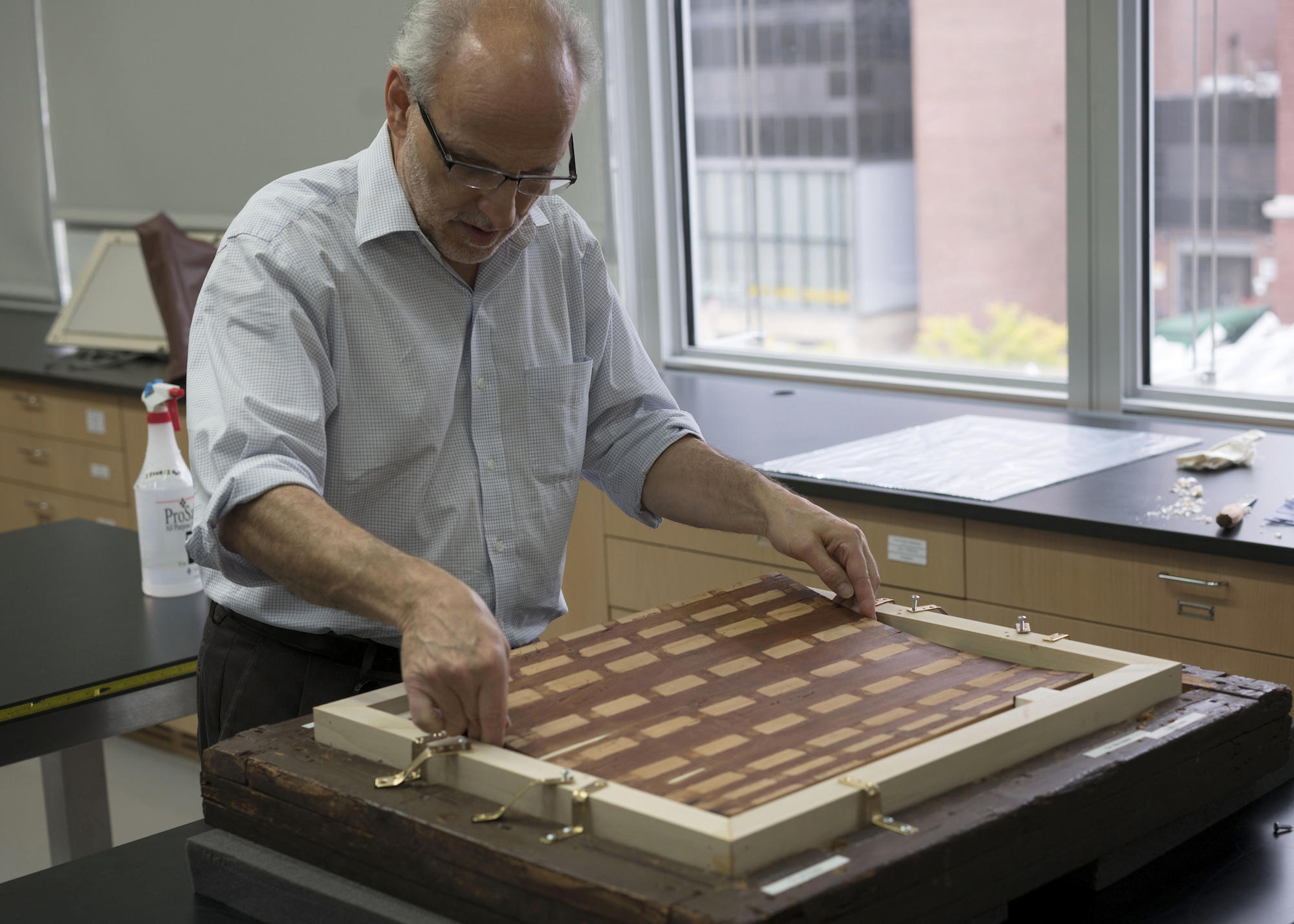
Gianfranco Pocobene fitting the Circle of Giovanni Bellini’s Christ Carrying the Cross to its frame, 2019
We then secured the painting to its frame and sealed it with a moisture barrier film to create an environmentally protected, enclosed space for the painting. Today, although a gentle curve remains across the surface of this painting—reminding us of its difficult journey—the painting is dramatically improved and visitors can now appreciate the artist’s enamel-like surface without the distractions in the recently restored Titian Room.
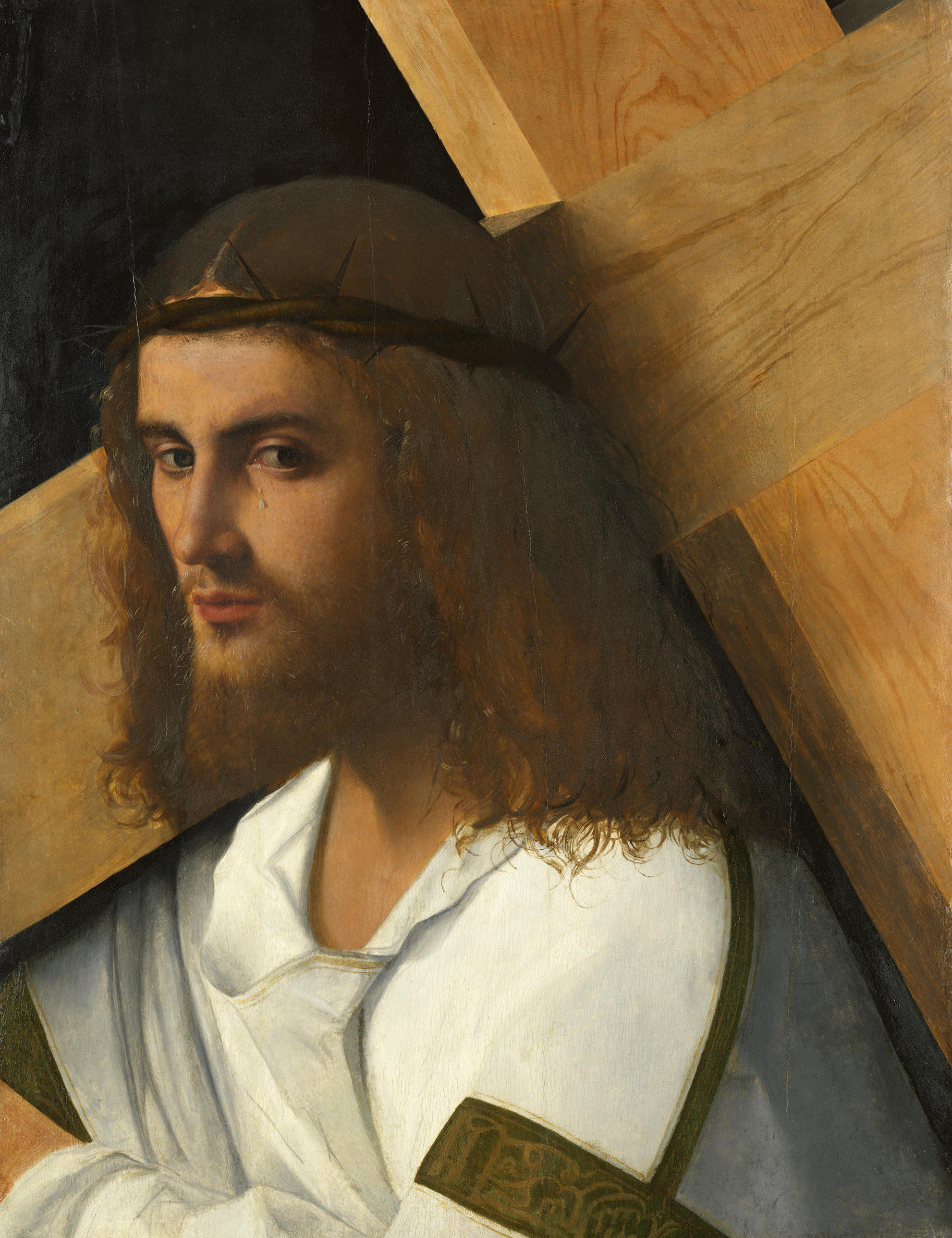
Circle of Giovanni Bellini’s Christ Carrying the Cross after its 2019 treatment. See it in the Titian Room!
You Might Also Like

Learn More
State-of-the-Art: Conservation at the Gardner

Read more on the blog
A Mysterious Sitter Prepares for an Overseas Journey

Explore the collection
Giovanni Bellini (Italian, about 1431-1436–1516), <em>The Virgin with the Sleeping Child</em>, about 1470–1475